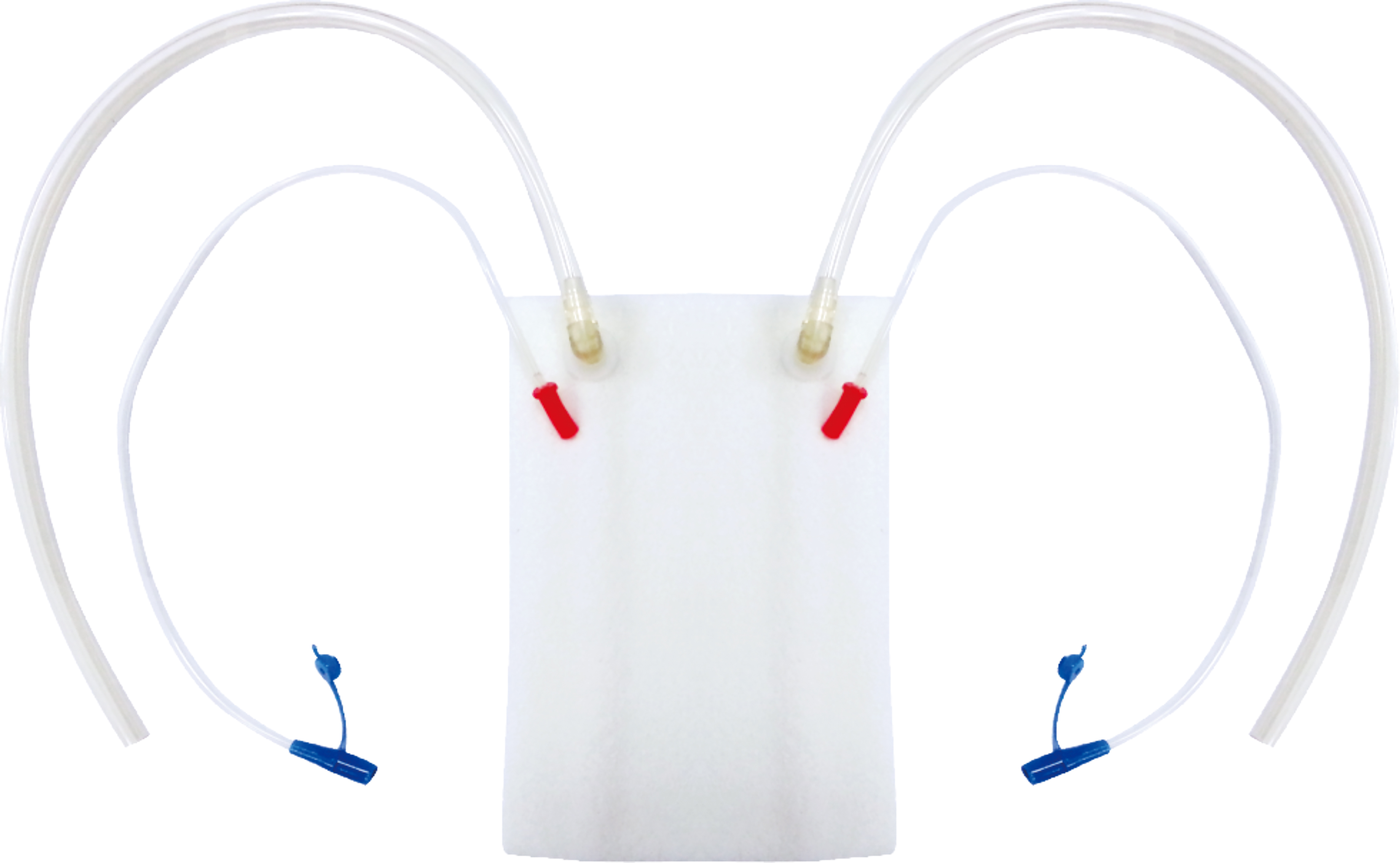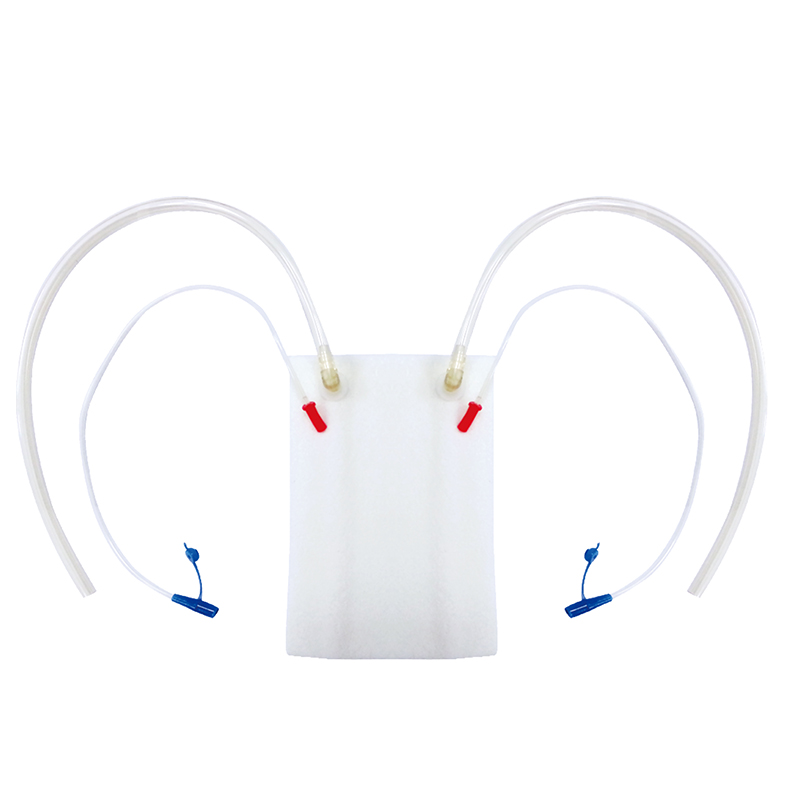Instructions
- Disinfection of the wound and drying of the skin around the wound;
- Under clean condition, tearing open the inner package of the trauma material, removing the material and trimming or splicing the foam sponge according to the trauma condition;
- Medical biological semi-permeable film is used to cover the foam sponge and the trauma surface to isolate and close it from the outside world;
- All external irrigation and drainage tubes are then secured with a medical semi-permeable membrane;
- Two or more drains can be combined into one or two drainage outlets by connecting them with a tee;
- The drainage outlet is connected to a drainage bottle and a negative pressure source, which is adjusted to meet the clinical demand for negative pressure and then continuously suctioned;
- Observing the foam sponge being absorbed and compressed and the situation in the drainage tube, dealing with the air leakage in each location immediately and keeping the trauma sealed.
Features
- Drainage tube combined with flushing tube
A small flushing tube wrapped around the drainage tube inside and outside allows complete flushing of the wound;
- Controllable negative pressure
Promoting blood flow growth and proteining synthesis to accelerate blood circulation;
- Medium drainage tube for the purpose of dressing flushing and drug delivery
- Polyvinyl alcohol (PVA) foam dressing
Hydrophilic material with dense mesh to prevent overgrowth of granulation and protect the wound;
- Closure using biological semi-permeable membranes
One-way air permeability function, can isolate the outside air and bacteria into the wound.
Specifications
| Product Type |
Model |
Length(mm) |
width(mm) |
Thickness(mm) |
| PVA white foam |
FWS-WJ-003A |
200 |
100 |
10 |
| PVA white foam |
FWS-WJ-003B |
200 |
100 |
10 |
| PVA white foam |
FWS-WJ-003C |
200 |
100 |
10 |
Scope of application
Surface wounds, especially chronic wounds: such as soft tissue contusions of limbs, venous ulcers of lower limbs, chronic osteomyelitis with long-lasting wounds, etc.;
Bedsores, diabetic foot ulcers; various burn wounds; plastic skin graft wounds, etc.



